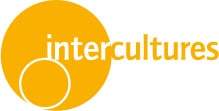



[ii] In business terms, an inpat (impatriate) is transferred from corporate headquarters to a country where the corporation has a subsidiary. An expat (expatriate) is transferred from the foreign subsidiary to the country of the corporate headquarters.[iii] Source: Worldometers (Sept. 2016 estimate).[iv] Source: United Nations International Children’s Emergency Fund (UNICEF) (2008-2012). Includes persons aged 15+ who can read and write.
Credit for photo of Azadi Tower: Stefan Meister.
Source for regional map: By Cacahuate, amendments by Globe-trotter and Joelf (Own work based on the blank world map) [CC BY-SA 4.0-3.0-2.5-2.0-1.0 (https://creativecommons.org/licenses/by-sa/4.0-3.0-2.5-2.0-1.0)], via Wikimedia Commons.
Source for flag of Iran: By Various – URL https://www.isiri.org/portal/files/std/1.htm and an English translation / interpretation at URL https://flagspot.net/flags/ir’.html, Public Domain, https://commons.wikimedia.org/w/index.php?curid=3662823.
Credit for screenshot of Pari Namazie: Youtube Screenshot.
The above article was included in our Sept. 2016 intercultures e-newsletter.
